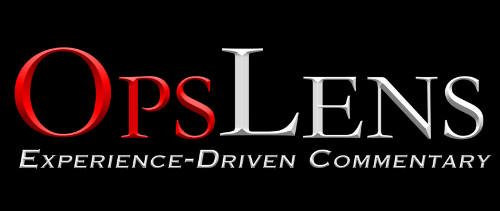People inside and outside the military are constantly fascinated with Special Operations. However, when many people actually meet, in person, members of Special Operations teams, they seemed shocked. They expect to see massive ripped bodybuilders with throwing knife drop holsters (I’m not sure if they make these, but if they do, I want one—in black, of course!) carrying two squad automatic weapons (SAW) and smoking a Cuban cigar.
What makes Special Operations soldiers unique are their personal levels of planning, performance, dedication, and constant focus on learning, improving, rehearsing, and teaching their team members how to improve.
Special Operations Leadership Skills That Create Winning Teams
Military Skills That Create Winning Teams – Simultaneous Team Leader and Team Follower. Does an innovation process need leaders or team members? The answer is yes. On great teams that foster innovation, a team member must be able to perform as both a leader and a follower. The ability to know when to jump in front to lead, gather information, and take the initiative is just as important as knowing when to support the current leader, help the leader succeed, and help the leader be successful. A vast majority of people think of themselves as either a leader or a follower. Military veterans know how to be both, and the ability to jump back and forth between leader and follower makes a military veteran on an innovation team a dual asset because they can contribute 100% in either capacity.
Military Skills That Create Winning Teams – Determine Key Project Activities Starting from Project Completion to the Present. The backward planning process is a core military planning sequence that starts at the completed project and works back to the present. The use of a synchronization matrix helps align resources, organization, and time to ensure everyone works together. In the synchronization matrix, start your activities working from the completed project back to the present. Therefore, if my project is to provide supplies to help build a bridge, my completed project is that the bridge is open. The week before the bridge opens; I should be part of the final bridge inspection and clean up the construction site. This backward logic goes back to the first week of the project, where I inspect the construction site and finalize the list of needed supplies. When you create a project task list, the current week’s activities are listed first, leading the final week activities. The simplicity of this process is that when you start with success and work back, you incorporate all the critical steps necessary to succeed.
Military Skills That Create Winning Teams – War Game and Share the Final Plan With Your Team. When the draft synchronization matrix and draft project task list are created, war gaming is the next step. In the military, war gaming is the process that tests and adapts battle plans against the expected actions and reactions of the enemy. As a battle plan is developed, military planners have a separate team role-play the “enemy” to ensure the initial plan is challenged against the full range of what the enemy will and can do. Once the war game is complete, the draft plan is finalized to ensure all of the anticipated enemy actions are mitigated. The war game process is when you put a draft plan against expected challenges and potential problems to ensure that your plan will be successful. For example, the supplies for the bridge building project may include placing gravel at key spots in the dirt road leading to the work site so the road does not wash out and stop construction when it rains. Once a problem is identified in the war game process, the synchronization matrix and project task list are adjusted to take advantage of the learning point.
Military Skills That Create Winning Teams – The Ability to Perform Iterative Improvements Through Rehearsals. Innovation for any type of improvement in any industry requires constant testing and improving followed by re-testing. This ability to perform, test, and improve is a critical aspect of the innovation mindset—one in which military veterans excel. Military veterans excel at this process because the use of perfecting individual drills is a critical aspect of military excellence. The setting up of a machine gun by a weapons team quickly and under all weather conditions is a key aspect of success. Military convoy teams constantly rehearse and re-rehearse how to react to an enemy attack, treat an injured team member, or recover a stuck vehicle. The ability to know how to practice, improve, and practice again that military veterans know at a base level is critical to innovation success.
Military Skills That Create Winning Teams – The After Action Review. The US Army uses the After Action Review (AAR), and the Navy and Air Force use the debrief process. The purpose for both the AAR and the debrief process is to help an organization and individuals understand what happened, what worked, what did not work and why, and what the plan is to improve the deficient areas. In the military, the AAR process is used daily in the same manner, regardless of whether the unit is 3-5 people or thousands. One of the most valuable aspects of the AAR is that a well-run AAR creates engagement by participants because it asks and listens to feedback from ALL team members regardless of rank, position, or experience.
Back-Up Plans. Another Special Operations planning process is the P-A-C-E plan. P-A-C-E stands for Primary, Alternate, Contingency, and Emergency, and it is used to create four independent and effective ways to accomplish critical battlefield processes such as casualty evacuation, ammunition resupply, or leaving an objective area. With P-A-C-E, Special Operations ensure success because they plan and anticipate problems and find ways to surmount obstacles to ensure the mission is a success even if their first three plans fail. Success is not by accident, it is a plan.
Military SOF teams succeed through hard work, rehearsals, extensive training, extensive planning, thorough use of intelligence, and technology. However, the greatest asset to any team is the individual skill sets working together to enhance, train, teach, and lead the team to ever higher levels of performance.

















